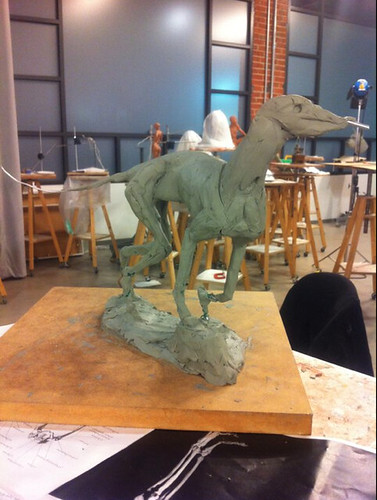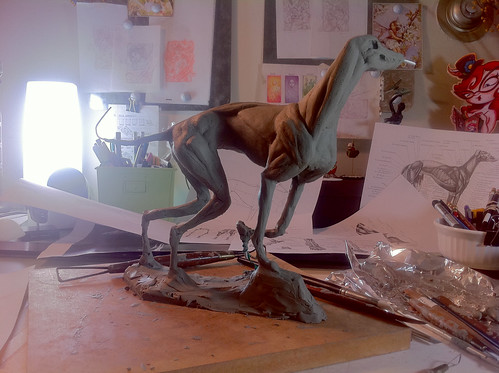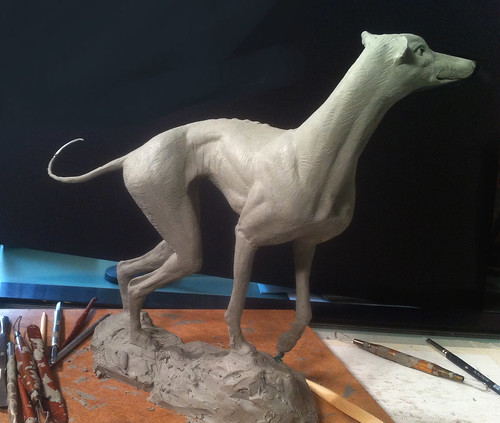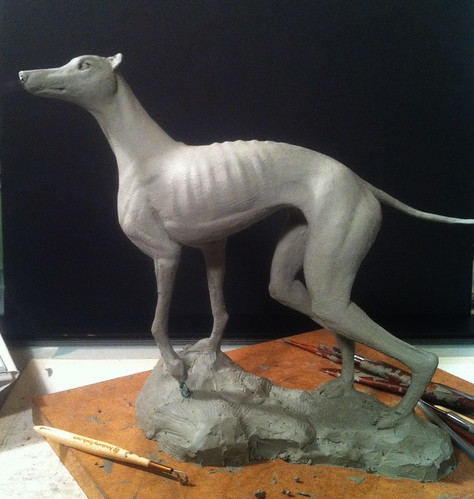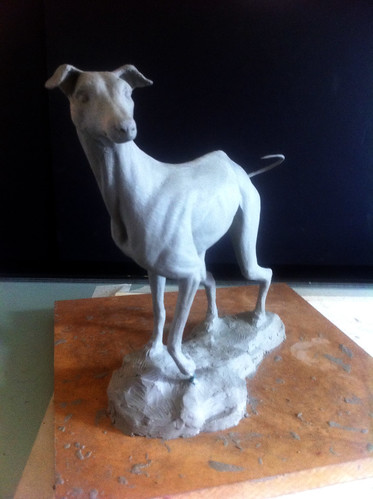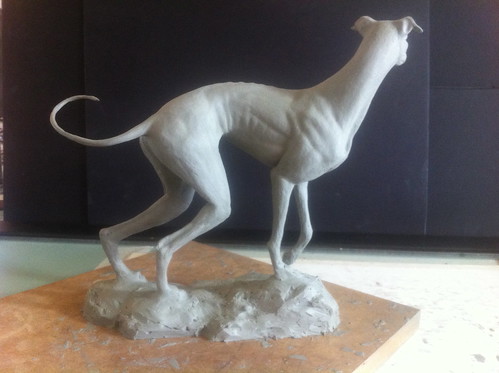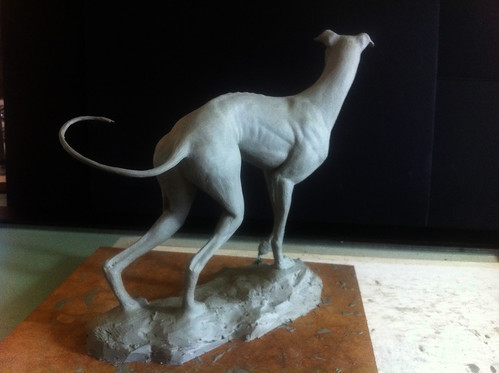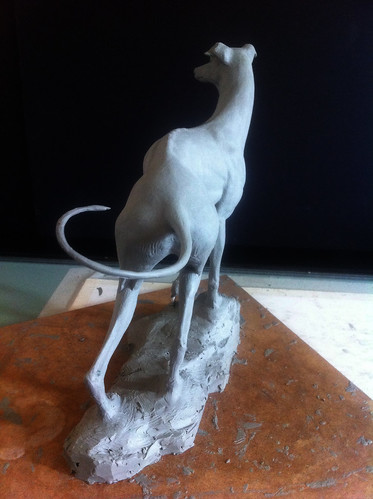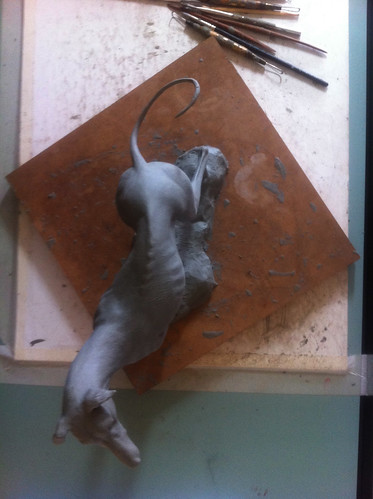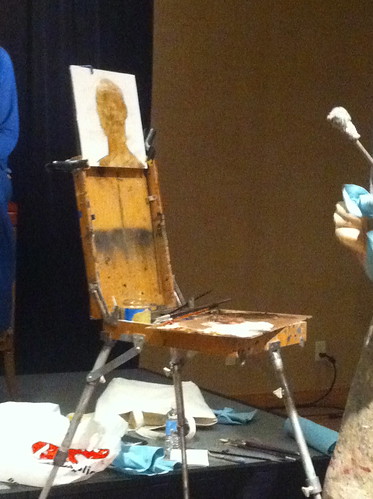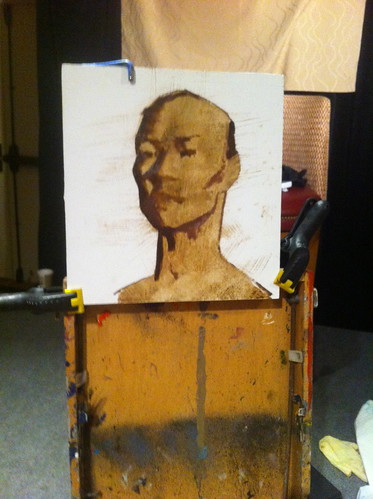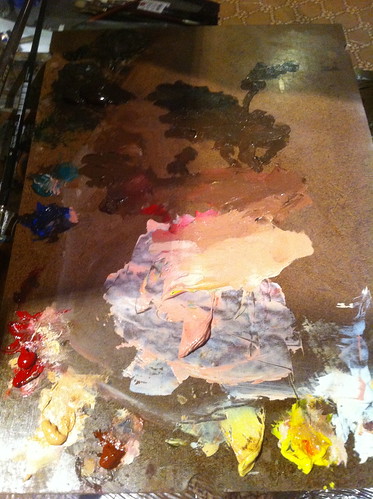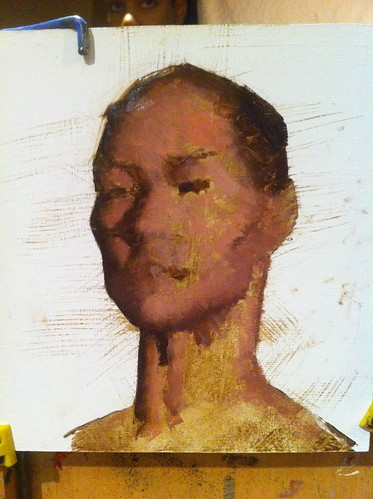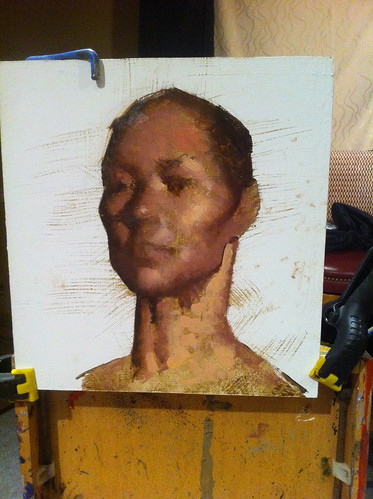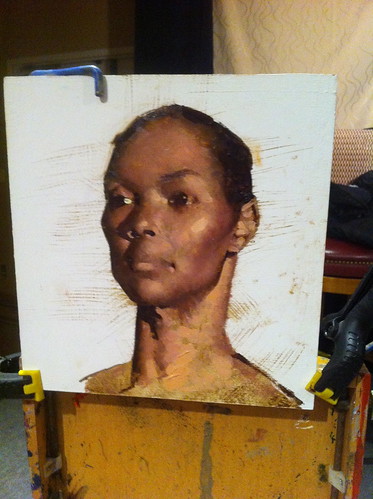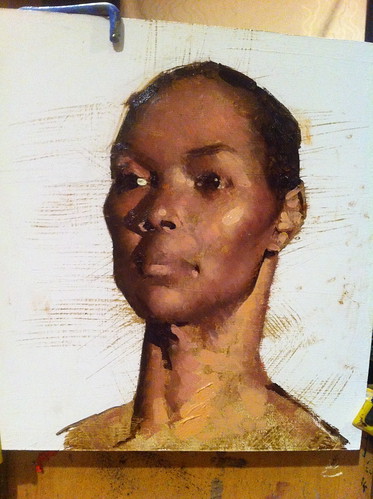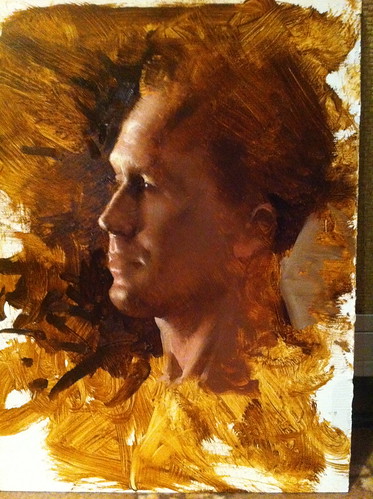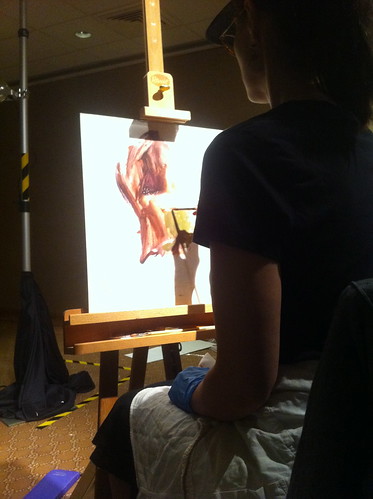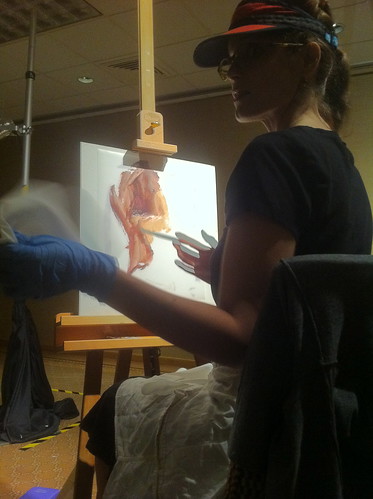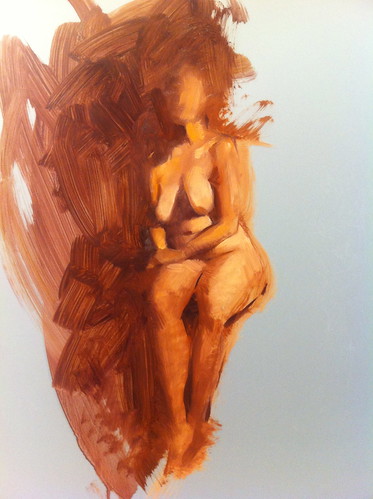On Thursday evenings, I attend a sculpture workshop with some friends. Usually we hire a model for figurative work. This time, however, we thought we'd tackle something different, the greyhound of one of our favorite models.
We set Bowie up on a sleeping mat while we sculpted. Occasionally she would get up and walk around the room or go outside for a quick run.
While I was making the armature, I observed the incredibly graceful movements of our model. I noticed the long flowing s curves repeated throughout her form and her incredibly "springy" stride. I wanted to somehow capture that kinetic grace in the pose.
I didn't make any gesture drawings, but instead decided to just mess with the armature until I found a pose that worked. I put a base layer of clay on the armature, adjusted it several times, and after about two sessions found a pose that had movement. I had trouble with the armature because I used aluminum wire where I should have used steel; the clay is heavy and can bend the aluminum wire. To compensate I decided to make a sturdy base at the bottom and balled up aluminum foil for the rib cage.
Eventually, our Thursday night sessions ended and our model was no longer available. I decided to take the sculpture home to work on it little by little after work.
The truth is, I am not really a sculptor. I am a two dimensional artist studying the 3rd dimension, sculpture. In the 3 years since I have been learning about sculpting with my friends each Thursday, I have found that the practice aids my understanding of depicting nature in two dimensions greatly. My mind is better able to process how form turns and how light falls on those forms far better than if I hadn't.
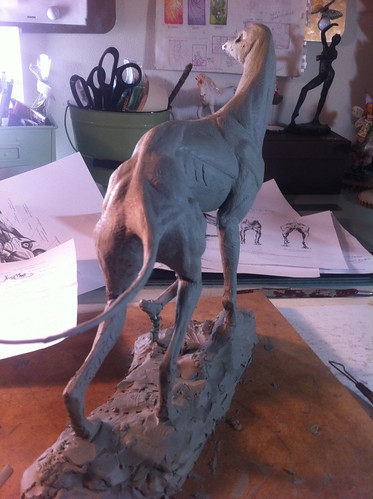
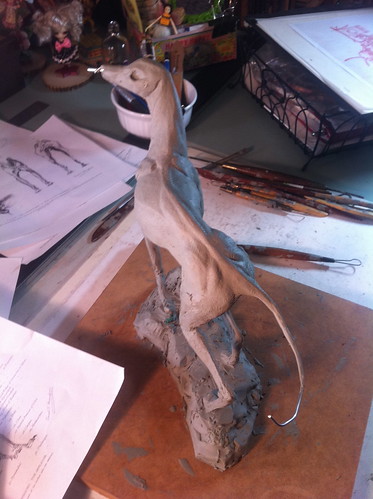
My underlying interest in visual language is the idea of making something, anything feel alive to the viewer, whether it is realistic or fantasy; I want to be able create an illusion and spirit of life, the sublime. I strive to transcend technique in order to create something beautiful that reflects Nature in a visually poetic manner. It is this idea that keeps me pushing forward, wanting to learn more, improve my abilities and become increasingly skilled at how I might do this. Sculpture has helped me understand in a different way how to think about how to capturing "aliveness" of a creation. While I am certainly a lesser sculptor than others, I feel exploring this medium has helped me solidify ideas about visual illusions.
At this point, I decided to place a black board behind Bowie so that I could see more clearly the lines of her form. I started to soften the muscles and add some areas of compression along with skin folds. I came to the conclusion that although some of the sculpture might not be entirely "correct", it was my choice in serving the design at this point; I enjoyed rounding out forms and accenting areas I found the most beautiful.
At this point, I decided to place a black board behind Bowie so that I could see more clearly the lines of her form. I started to soften the muscles and add some areas of compression along with skin folds. I came to the conclusion that although some of the sculpture might not be entirely "correct", it was my choice in serving the design at this point; I enjoyed rounding out forms and accenting areas I found the most beautiful.
*********
My "finished" sculpture, at least as finished as I want it to be:
"Bowie", oil based clay on wood base.
"Bowie", oil based clay on wood base.
s curves in motion:
While I worked on this sculpture throughout the summer, I took breaks to attend the Weekend with the Masters painting conference, which you can find in some of my previous posts, but, perhaps more interestingly, during this time I immersed myself in the work of string theorist Brian Greene, author of "The Hidden Reality". *
Aside from ideas about the shape of our questionably infinite universe, one fact about Greene's work stands out as entirely relevant to every day considerations:
"Nothing in the laws of physics points to free will. Therefore, like time, it is a useful illusion. We are a bag of particles governed by the laws of physics. And that’s it.”
(from an interview with screen writer Charlie Kaufman)
Really? Assuming Nature created these complex particles, it also created the desire for some of us to want to recreate it in art. Why? To understand it? For what purpose? Maybe meditating on Nature's beauty is somehow important in the grander scheme. It certainly is for me at least.
*You can also watch a fantastic PBS dvd series based on his book by the same name, "The Elegant Universe", which explains quantum mechanics in layman terms and is pretty enjoyable regardless (among numerous articles and speeches published all over the web).


